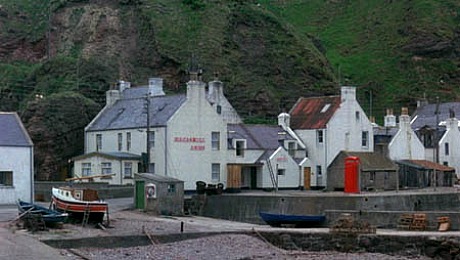This is one of the saddest lonely-guy endings ever. It gets me every time. But I always felt that director Bill Forsyth didn’t quite mix the sound at just the right levels for the final shot of the village. The framing should have been a little tighter on the red phone booth, and the ring-ring should have been a bit louder with Mark Knopfler‘s music turned down just a tad. If you’re not listening carefully (or watching on your 1998 TV with the sound too low) the ring-ring is almost inaudible.
David Bordwell wrote the following three years ago:
“The original cut ended with Peter Reigert‘s Mac returning to his Houston apartment and staring out at the dark urban landscape — beautiful in its own way, but very different from the majesty of the Scottish shore,. There the original film ended, but the Warners executives, although liking the film, wanted a more upbeat ending. Couldn’t the hero go back to Scotland and find happiness, you know, like in Brigadoon? They even offered money for a reshoot to provide a happy wrapup.
“Forsyth didn’t want that, of course, but he had less than a day to find an ending.
“The movie makes a running gag of the red phone booth through which Mac communicates with Houston. Forsyth remembered that he had a tail-end of a long shot of the town, with the booth standing out sharply. He had just enough footage for a fairly lengthy shot. So he decided to end the film with that image, and he simply added the sound of the phone ringing.
“With this ending, the audience gets to be smart and hopeful. We realize that our displaced local hero is phoning the town he loves, and perhaps he will announce his return. This final grace note provides a lilt that the grim ending would not. Sometimes, you want to thank the suits — not for their bloody-mindedness, but for the occasions when their formulaic demands give the filmmaker a chance to rediscover fresh and felicitous possibilities in the material.”

